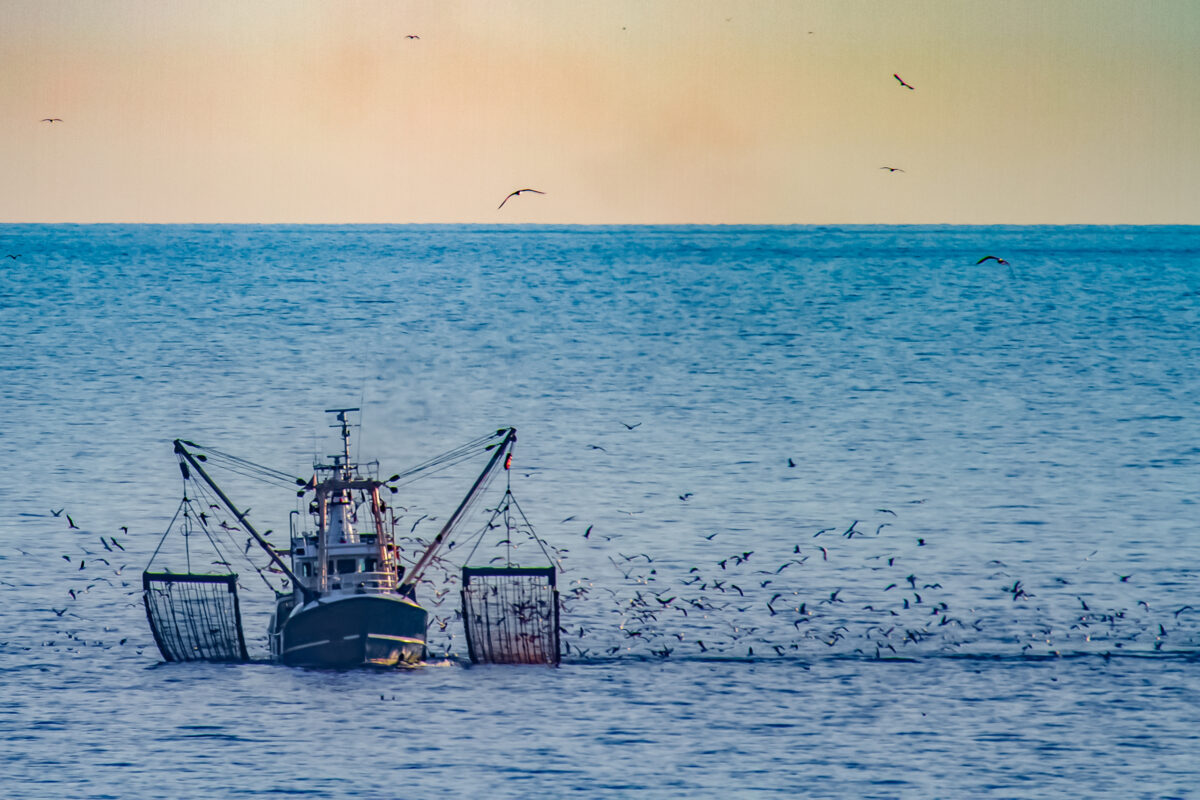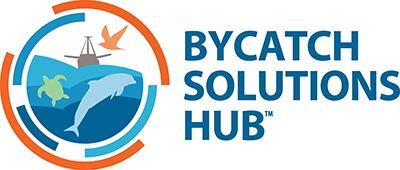Gear Types
Trawlers
Trawls are large nets in the shape of a bag towed behind fishing vessels that scoop up any fish and wildlife in its path.
Trawl nets can be massive. The largest industrial trawlers can collect thousands of tons in a single tow, often towing nets for hours. Mid-water trawls are dragged well above the ocean floor and are often used to fish for schooling fishes such as mackerel and pollock. Bottom trawls are dragged on the sea floor and target demersal fish (e.g., cod or flounder), shrimp, crabs, and other crustaceans living on the bottom. However, bottom trawls can also destroy seafloor habitat such as seagrasses, coral reefs, and kelp forests, and stir up sediment.

Turtle excluder devices can greatly decrease mortality rates by giving sea turtles and escape route while in the net.
Trawlers are moving nets that scoop up anything in their path. Since wildlife often feeds and therefore mixes in with target fish, they also can get dragged into the net. Any animal that gets caught up in the net without a designed area to escape is likely to die as it gets dragged to the back of the net. Air breathing animals will likely drown while softer fish can get crushed from the pressure. In order to prevent mortality from bycatch, nets need to avoid high-risk areas and include the appropriate excluder devices.
ETP Impacts and Fishery Recommendations
- Require the use of turtle excluder devices (TEDs) in fisheries that pose a risk to sea turtles.
- Provide best methods handling-and-release training to the captain and crew.
- Require 100% coverage on all fishing vessels – through a combination of human observer and electronic monitoring – with detailed bycatch data collection.
- Ensure 100% compliance with all management measures specific to sea turtles, both at the country and management-organization level.
- Limit offal discharge to only when fishing gear is on board and properly stored.
- Clean the trawl net of any discards or fish parts between sets.
- Provide best methods handling-and-release training to the captain and crew.
- Add weights to the codend and net belly to increase the sink rate and hauling angle.
- Require 100% coverage on all fishing vessels – through a combination of human observer and electronic monitoring – with detailed bycatch data collection.
- Ensure 100% compliance with all management measures specific to seabirds, both at the country and management-organization level.
Bycatch of marine mammals is uncommon with trawlers, though in some fisheries sea lions can get caught in mid-water trawls often enough to be a concern. These typically are fisheries in temperate regions at higher latitudes.
Bottom trawlers in tropical coastal regions can decimate sea turtle nesting populations. Often these trawls are targeting demersal fishes and crustaceans – commonly flounder, shrimp, and crab – in sandy regions near nesting beaches. Historically, sea turtles caught in bottom trawls would get trapped at the back of the net and drown. However, when turtle excluder devices (TEDs) are properly installed in trawl nets, most juvenile and adult sea turtles successfully escape after being caught. In areas where TEDs are properly installed, sea turtle bycatch rates are negligible.
For many of these fisheries, no observer program exists, and their impact on sea turtles and other ETP bycatch is not well understood. The primary focus for regions that have coastal trawl fisheries that overlap with sea turtle populations needs to be to require TEDs and develop observer programs to better document and understand where bycatch risks are greatest.
General Recommendations
Both mid-water and bottom trawlers present the same risk to seabirds while the trawl net is being set and hauled. When the net is set, excited seabirds fly into the warp lines that are used to keep the net lined up. However, the greatest risk to seabirds is entanglement with the net itself during hauling. When the net is hauled full of fish, often with fish stuck to the outside, seabirds attempt to feed on the fish and get caught in the net. This can lead to severe injuries and drowning. The most effective tools to mitigate seabird bycatch are methods to minimize seabird attraction to the vessel, for example, through the proper management of offal discharge, cleaning the net between trawls, and removing stuck fish before resetting.
General Recommendations
Rays can make up a substantial component of bycatch by bottom trawls dragged over sandy sea floors. Sharks are not commonly caught, though interactions between shrimp trawlers and endangered sawfish have recently led to a need to address sawfish bycatch in these fisheries.
